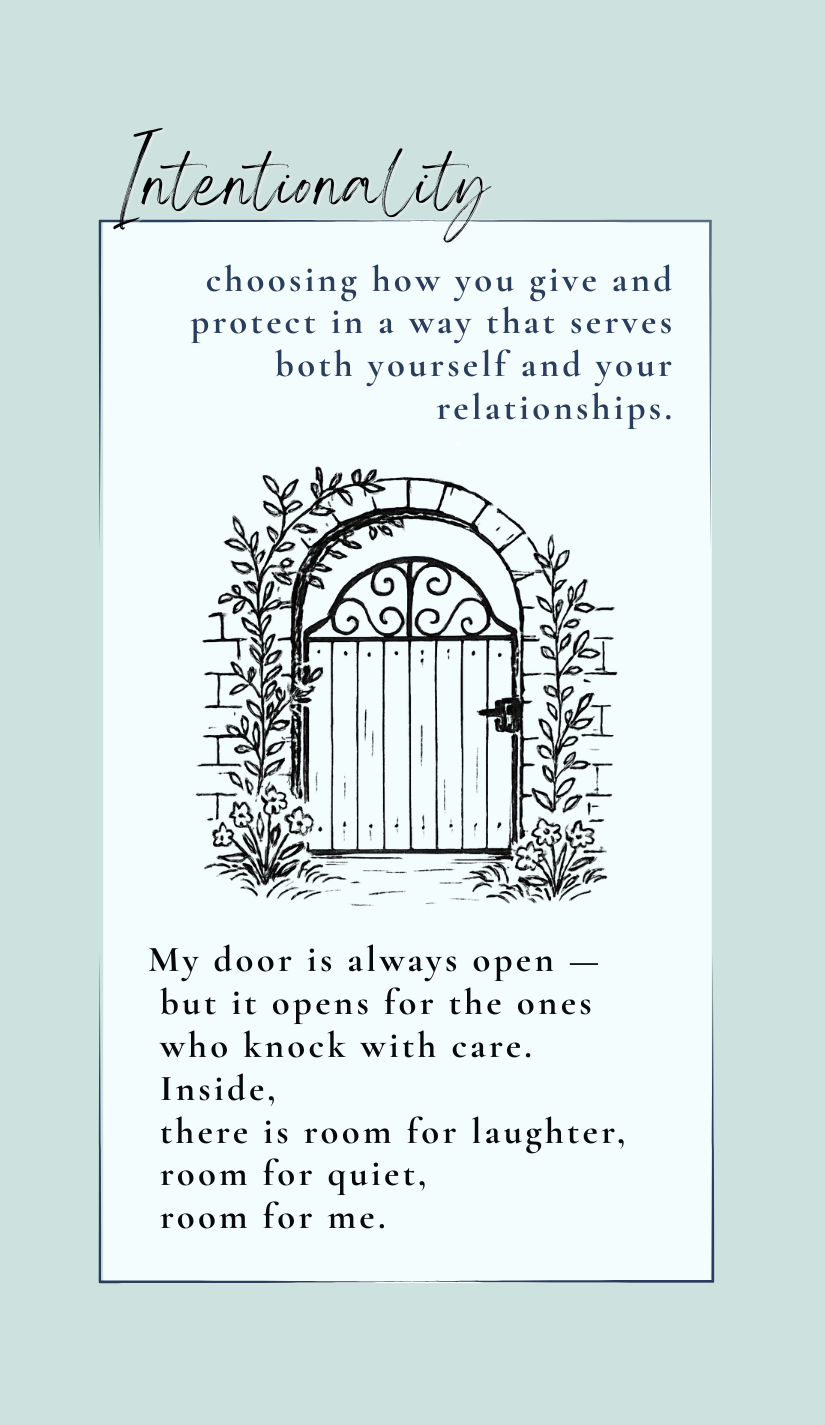The Balance Between Protection and Connection
Sometimes your system holds two different strategies for managing relationships — one that says safety comes from strong boundaries, another that says safety comes from making others happy.
Fight carries the wisdom of boundaries, the intelligence of knowing when protecting your space and energy serves your wellbeing. It says: Your needs matter. Guard what's precious. Sometimes safety lives in saying no and holding your ground.
Fawn holds the wisdom of harmony, the intelligence of knowing that meeting others' needs can create connection and prevent conflict. It says: Others' comfort matters. Give what you can. Sometimes safety lives in being helpful and accommodating.
Both responses learned their strategies when you needed exactly that kind of protection. Fight learned that defending your boundaries could prevent being taken advantage of or overwhelmed. Fawn learned that anticipating others' needs could prevent rejection, anger, or abandonment.
When they both show up, it can feel like being caught between two different versions of love — the love that protects by creating distance and the love that connects by giving freely, the fear of being used and the fear of being rejected.
This tension isn't about being selfish or codependent. It's your system trying to honor both your own needs and your desire for meaningful relationships.
Gentle Reflection
What if the conflict between guarding and giving isn't about being good or bad at relationships, but about your nervous system's sophisticated understanding that both boundaries and generosity can create safety?
Fight isn't about being mean — it's about being self-preserving. Fawn isn't about being weak — it's about being caring. Both responses reflect different understandings of how to create security in connection.
Your system learned that sometimes safety requires strong boundaries to prevent depletion or harm, and sometimes it requires generous giving to build bonds and prevent conflict.
The goal isn't to always guard or always give, but to develop the discernment to know when each response serves both your authentic self and your genuine relationships.
Journal Prompts
When do you notice the urge to protect yourself or create distance? What is that response trying to preserve or prevent?
When do you feel the pull to accommodate or give to others? What is that impulse hoping to create or maintain?
What would boundaried generosity look like — giving from fullness rather than fear?
Integration Practice
"The Garden Gate"
Imagine yourself standing in a beautiful garden that represents your inner world.
Picture a gate at the entrance — sturdy enough to keep out what doesn't serve, beautiful enough to welcome what does.
Practice opening the gate for people and experiences that nourish you.
Practice closing the gate when you need restoration or when something feels draining.
Notice that you can be both welcoming and discerning, both generous and protective.
Let yourself feel the power of choosing who and what to let into your inner garden.
Closing Thought
You are not selfish for protecting your energy and space. You are responsible.
You are not weak for wanting to give to others. You are loving.
The dance between guarding and giving is not a relationship problem — it's relationship wisdom.
True generosity flows from a protected center. True boundaries serve authentic connection. You can be both strong and kind, both protective and loving.
